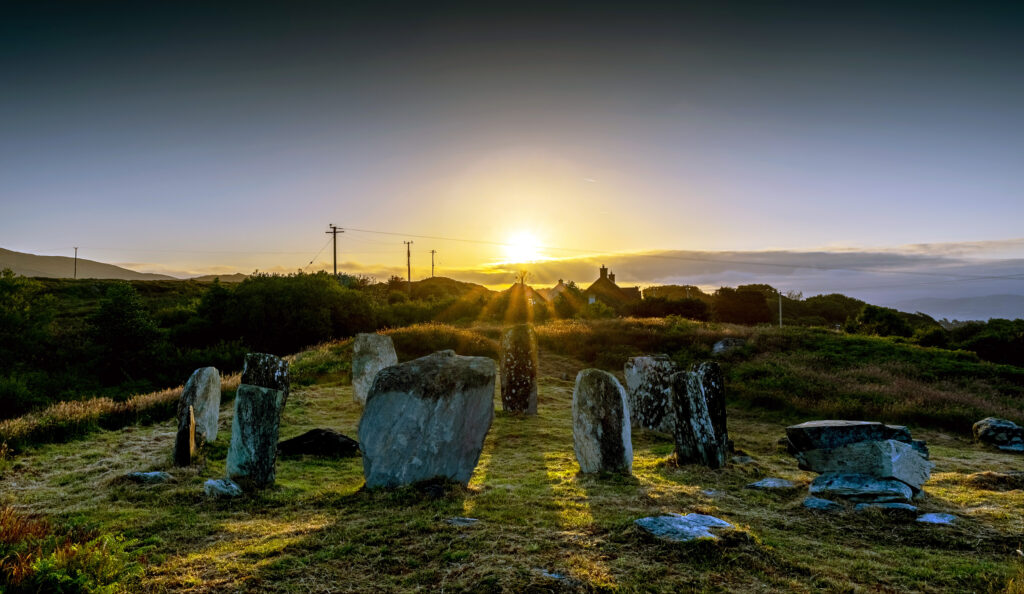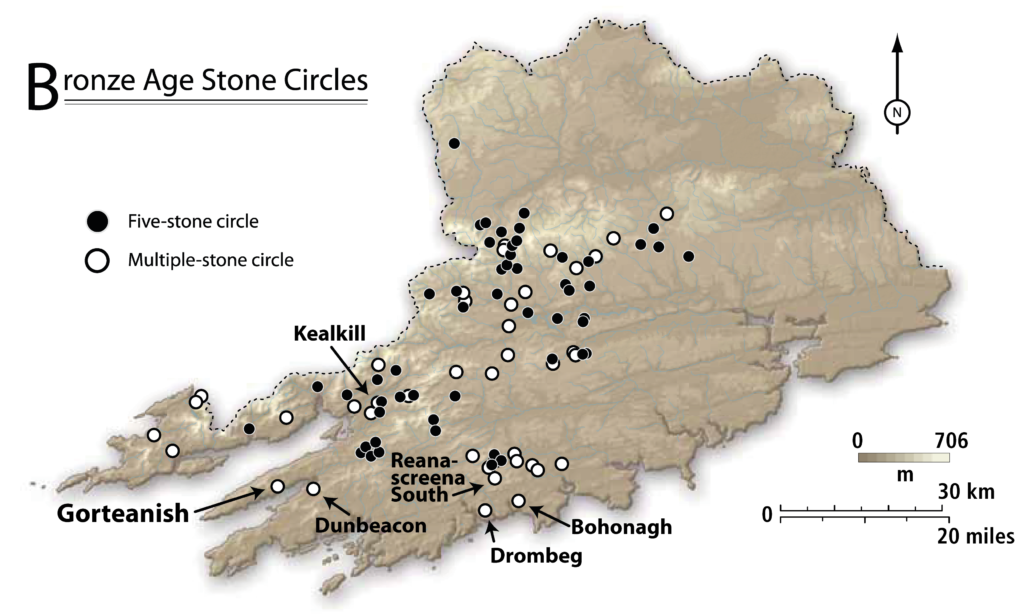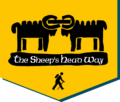Gorteanish Stone Circle Excavation
Gorteanish Stone Circle
Gorteanish is a good example of a Bronze Age stone circle with an adjacent boulder-burial. While there is no early record, there was a local memory of ‘upright stones’ here to modern times. These were located by Tom Whitty in 1995 during development of the Sheep’s Head Way. The circle is 7.5–9m in diameter and comprised of eleven stones from the local geology. Seven of these had fallen prior to excavation. There is a large axial stone on the south-west side, directly opposite two tall portal stones that mark a north-east entrance. A low boulder inside the circle may pre-date the monument as a natural feature.

Bronze Age Ireland
The Bronze Age (2100–600BC) is a period of prehistory known for its distinctive metalworking. Numerous bronze and gold objects were produced at a time of significant population growth and agricultural settlement across Ireland. Religion was important for those communities, with regional practices represented by different ritual monuments in the landscape. Many of these are funerary sites that reveal a strong belief in an after-life and in supernatural powers who controlled the fate of the living. Worship of the sun was central to those beliefs, with rituals to mark the passing of the seasons in a farming economy.

Stone Circle Excavation
This site was excavated in 2023 by archaeologists from University College Cork. Organic preservation was poor, with no burials or early artifacts found. While it is not certain when the stone circle was built, this was probably a single event about three thousand years ago. Excavation found pit sockets with packing stones for each standing stone in the circle. A small pit at the centre did not contain burials or other finds. White quartz had been scattered with religious intent inside the circle. On completion of excavation, the stone circle and boulder-burial were restored to their original design.
Boulder-Burial
Adjacent to Gorteanish stone circle is a broken blocky boulder resting on three smaller stones, with an opening on its lower northern side. No burials or early artifacts were found during the excavation of this structure. White quartz pebbles were scattered with religious intent at the monument. Charcoal found inside the structure is radiocarbon dated 1279–1121 BC, when the stone circle is also likely to have been built. This is consistent with radiocarbon results for excavated stone circles and rows in the region, monuments that are closely associated with boulder-burials.



